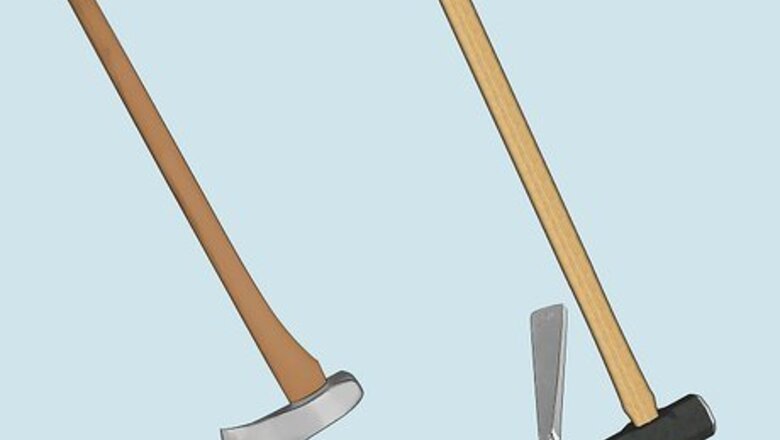
views
Setting Up
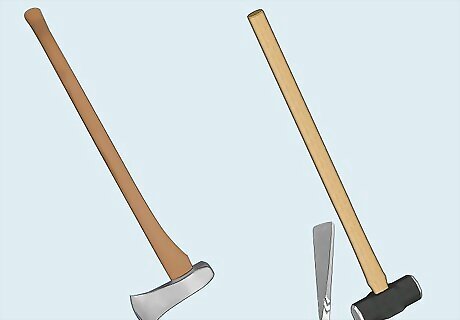
Use a maul or splitting wedges to split hardwood. A splitting maul is essentially a thicker, more wedge-shaped axe made for splitting hardwood along the grain, with a blunt sledge-hammer edge on the back of the splitting blade. These are typically somewhat heavier than an axe, usually by several pounds, and the weight of the maul makes the job easier. Splitting wedges are basically metal wedges that you drive into the wood with a sledge. The benefit of the wedge is that you can place it along the grain to split the wood, then drive it into the exact same place until it splits. Axes are used to chop wood, not to split it. It's best to use a maul or splitting wedges if you want to split hardwood.
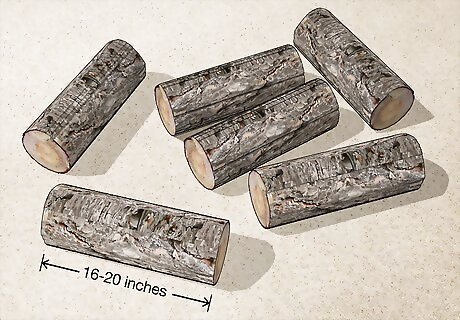
Cut your wood to length. Normal wood stoves and smaller fireplaces usually take a 16 to 20-inch (40 to 50 cm) log, and the shorter the log is, the more easily it will split. You should cut your wood to the most efficient length for your purpose, in terms of both handling and storing it, as well as making it a suitable length for your application. Try to cut the ends of each piece of firewood square and flat, as you will need to stand them on end to split them, and crooked cuts will make this difficult to do.
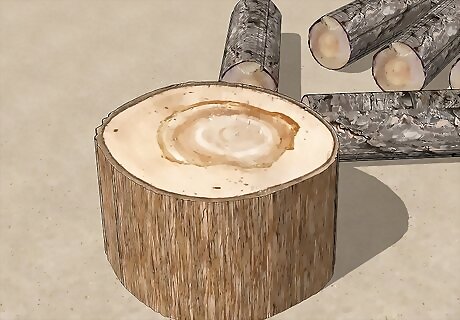
Set up a chopping block. Usually a large section of the tree's trunk, this will be the surface you place individual logs on to split them, making it easier to swing your axe, and causing less strain on your back. A wood surface about 6 inches off the ground is appropriate for any splitting job. The block should be neither too high nor too short, to avoid dangerous ricochets if you should strike a glancing blow. Always split on some kind of block, never the ground and never concrete. The ground will do in a pinch, but you'll tire more easily if you have to lift the heavy maul that much higher. Save your strength and split on a block, especially if you've got a lot of wood to split.
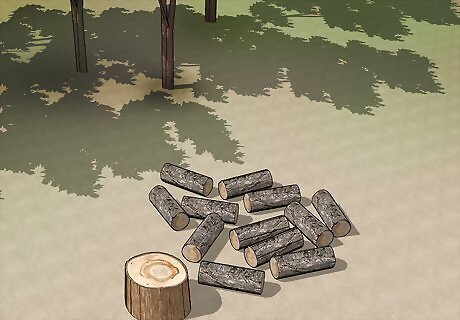
Set up in a safe location. Allow for good footing and make sure there is no debris or overhanging limbs around where you will be working. Splitting hardwood is especially efficient on cold days, if the wood has been properly aged before splitting. Pieces of hardwood will pop right apart with the proper technique during cold weather, making your job much easier.

Always wear the appropriate protective gear. For a day of splitting hardwood, outfit yourself properly. You should wear good-quality gloves to save your hands from splinters that will make the work much more uncomfortable, safety glasses, and solid work boots, preferably with a steel-toe. Never split wood by yourself, make sure someone else is at least around who'll be able to aid if you should have an accident.
Splitting with a Maul
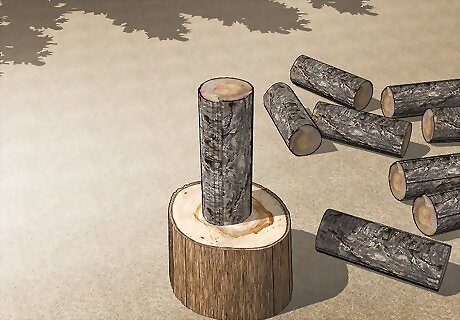
Place your first log on the chopping block. Make sure it is stable, and near the center of the block, if possible. Swinging a heavy maul at an unsteady block is extremely dangerous. A glancing blow could strike your leg, or send the wood flying off like a dangerous projectile. Set yourself up for success by placing the wood securely.
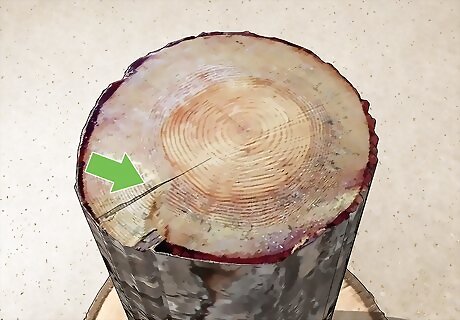
Examine the wood before splitting it. Look for hairline cracks in the log. You should aim so that the blade of you the maul runs in the same direction as the crack. Different woods split in different ways, so plan accordingly. Oak splits somewhat easily through the center, even large-diameter portions. Maple, on the other hand, is split more easily toward the edges of the end-grain. Look for large knots or places where a limb was removed when the wood was cut and avoid them. These places will likely have very crooked, gnarly grain, which should be avoided if possible. You could spend all day hacking away at knots.
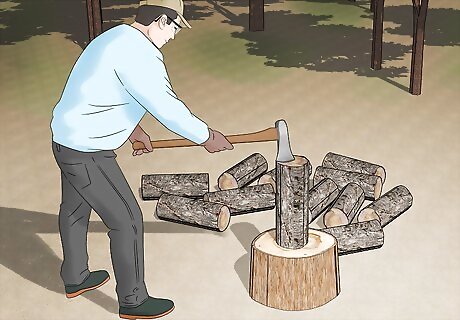
Aim. Choose the location you want to split the log, stand with your maul resting on that location, and set your feet square. You might tap a little indentation into the wood so you'll have a good visual cue at which to guide the maul, if the grain isn't obvious from where you're placed.
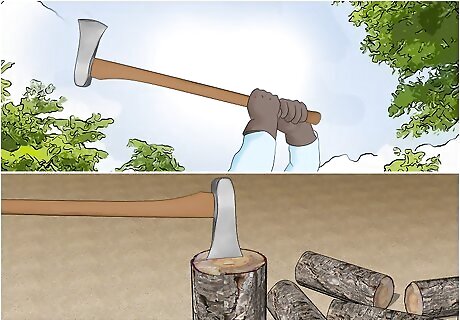
Bring the maul up and down. You don't really "swing" a maul, and you don't need to put the end behind your head at any point to split wood properly. Hold the maul firmly with your non-writing hand at the end of the handle, and cradle the maul with your dominant hand, just below the head of the maul. Flex your knees slightly, then lift the maul head straight up above your head, extending your arms straight. Slide your strong hand down until both of your hands are close, gripping the end of the handle, then bring your hands down and flick your wrists, letting gravity do much of the work for you. Splitting has much less to do with strength and more to do with using the correct technique. Swinging the maul wildly is both dangerous and exhausting.
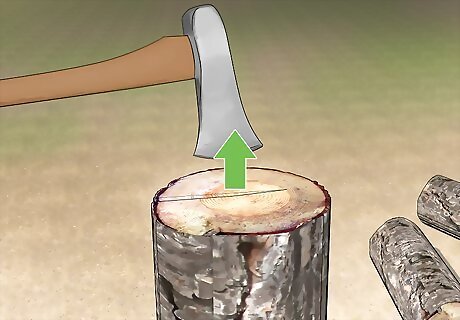
Pull the axe bit out of the log if the wood fails to split on the first swing. You may have to pull and twist it hard to remove it, if the bit is sunk deeply and stuck in the wood. Rock the axe bit up and down to work it out of the wood. Alternatively, you can treat the planted maul like a splitting wedge and hit the blunt metal end of the maul with a sledge. This is a popular and common technique for splitting logs. If you've placed the maul accurately, or it's quite stuck, don't waste energy pulling it out.
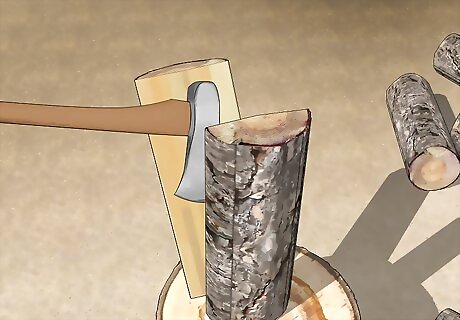
Repeat your swing into the wood until the wood splits. Try to strike in exactly the same place as the first time, or along the length of any crack which appeared when you hit it.
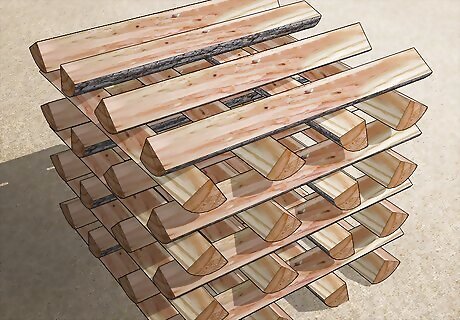
Split and stack. Split each block of wood into progressively smaller pieces, until they are the desired size. Normally, you will split the block in half, then each half will be split again, until the pieces are about 6 to 8 inches (15 to 20 cm) at the largest cross section. Stack split wood so that air can circulate around it to allow it to season thoroughly before it is burned in a wood stove or fireplace. Cover it to prevent rain from repeatedly wetting it, which will cause it to rot, but do so in a manner which still allows good air circulation.
Splitting with Wedges
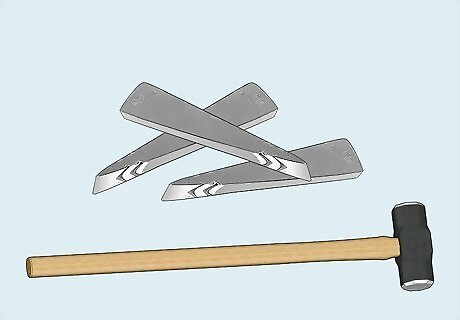
Have several wedges on hand. Wedges work best for knotty pieces of wood or especially hard or large-diameter pieces of wood. Because it's possible to drive a wedge deep into a thick log without necessarily splitting it, it's good to have back-up wedges available to save your initial wedge and complete the job, if it should get in over its "head". If you're commonly splitting with wedges, a good combination would be a sharp starter wedge that you can use to really bite into the wood and get it started, and another blunter but wider wedge that you can use to continue splitting once you've gotten it started.
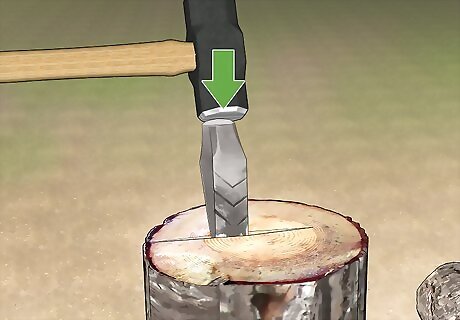
Tap the wedge into the grain with a sledge. A short-handled sledge should work just fine for the job, depending on the size of the log and what's available. Holding the wedge like you would a very-large nail, tap it in until it can stand on its own.
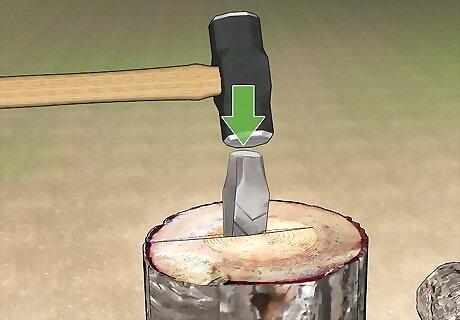
Hammer with the sledge. Using solid and straight blows, hammer the wedge into the log along the grain until it splits. If you hammer it all the way in and the log still hasn't split, start your other wedge along the same crack, but closer to the edge of the wood so the force will make the split longer, freeing both wedges and splitting the log. Be sure to stand clear of the line of the cracking, so the wedge won't pop out at your feet, dangerously. As you hammer, stand perpendicular to the splitting of the log and the wedge itself.
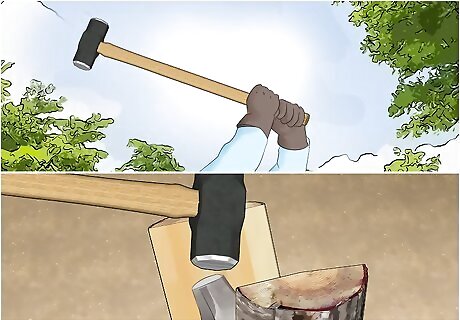
Finish the job. There might be some remaining connected wood fiber that you can finish with an axe, and you can likely use a maul or an axe to split the sections into smaller, more manageable pieces. Don't use wedges to split smaller sections of wood, as the likelihood of them popping through and flailing loose is more probable.


















Comments
0 comment